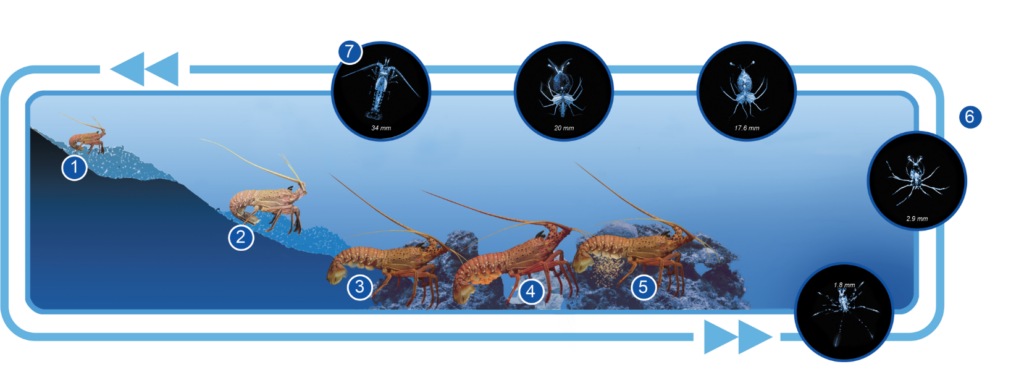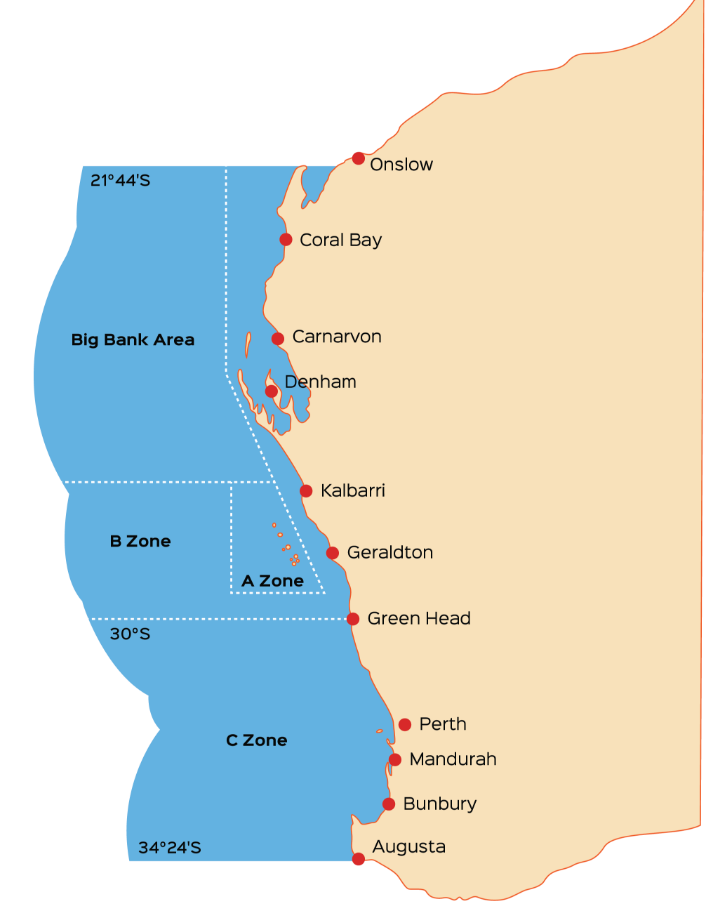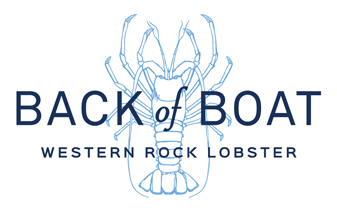About Us
Back of Boat is a Western Rock Lobster initiative to ensure the WA community has continuous access and ongoing connection to the Western Rock Lobster fishing industry.
The Western Rock Lobster
Western Rock Lobsters are part of the spiny lobster family which get their name from the hundreds of tiny forward-pointing spines that cover their body and carapace. They have two large antennae protruding from their head which serve as a navigation and communication tool as well as a defence weapon.
Western Rock Lobsters are sometimes mistakenly called ‘crayfish’ or ‘crays’, however they are actually very different. Lobsters live in the marine (ocean) environment however crayfish, like marrons and yabbies, are from freshwater. Additionally, rock lobsters don’t have claws whereas crayfish and ‘true’ lobsters do.
| Scientific name: | Panulirus Cygnus |
|---|---|
| Classification: | Decapod family |
| Average Size: | 70-90mm & 5kg at maturity |
| Average Lifespan: | 15-20 years |
| Typical Diet: | Coralline algae, detritus (dead and dying marine matter), molluscs and crustaceans |
| Predators: | Large fish species & octopus |
| Interesting fact: | Lobsters can regrow legs and antennae lost during scuffles with predators. |
The Western Rock Lobster Lifecycle
Explore the 7 stage lifecycle of The Western Rock Lobster with our interactive diagram below.

The Western Rock Lobster
Western Rock Lobsters are part of the spiny lobster family which get their name from the hundreds of tiny forward-pointing spines that cover their body and carapace. They have two large antennae protruding from their head which serve as a navigation and communication tool as well as a defence weapon.
Western Rock Lobsters are sometimes mistakenly called ‘crayfish’ or ‘crays’, however they are actually very different. Lobsters live in the marine (ocean) environment however crayfish, like marrons and yabbies, are from freshwater. Additionally, rock lobsters don’t have claws whereas crayfish and ‘true’ lobsters do.
Scientific name:
Panulirus Cygnus
Classification:
Decapod family
Average Size:
70-90mm & 5kg at maturity
Average Lifespan:
15-20years
Typical Diet:
Coralline algae, detritus (dead and dying marine matter), molluscs and crustaceans
Predators:
Large fish species & octopus
Interesting fact:
Lobsters can regrow legs and antennae lost during scuffles with predators.
The Fishery
The Western Rock Lobster industry is an iconic, world-class fishery that is based on the spiny lobster (Panulirus cygnus) along Western Australia’s coast from North West Cape to Cape Leeuwin.
- There are 700 licence holders and 237 active commercial boats in the western rock lobster fishery which supports coastal communities between Kalbarri and Mandurah.
- Fishing businesses are family owned and operated with some now in their 5th generation.
- The industry employs around 2000 people directly and indirectly.
- The commercial fishery is managed through an annual Total Allowable Commercial Catch (TACC) based on a harvest strategy and annual stock assessments by complex modelling.
- Each commercial licensed fisher is allocated a quota of lobster they are permitted to catch within that 12-month season according to how many pots a fisher owns.



